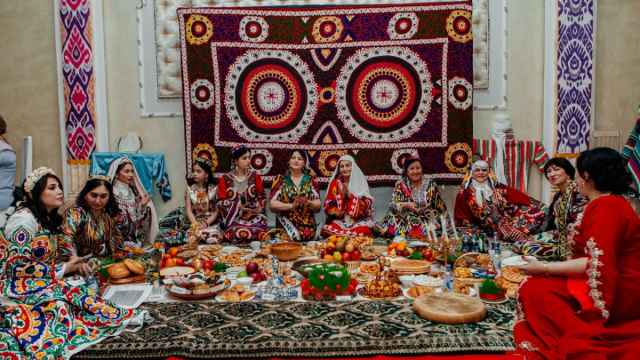In Russia's Arctic, Children of Reindeer Herders Spend Summer Working and Playing
Like their ancestors before them, the indigenous reindeer herders of Russia’s Arctic lead a largely nomadic lifestyle.
Herders accompany reindeer on the animals’ seasonal migrations across the vast tundra, traveling distances of 200 to 1,500 kilometers each year with their homes in tow.
Once children reach school age, they typically stay behind in the village to attend boarding school, rejoining their parents for the winter and summer holidays.
And while the summer months bring a respite from the bitter Arctic cold, there’s still plenty of work to be done for adults and children alike — but also opportunities for leisure.
Photographer Alexander Romanov traveled to the far northern reaches of the Yamal-Nenets autonomous district in July to capture how reindeer herders and their families spend the summer:
Herders accompany reindeer on the animals’ seasonal migrations across the vast tundra, traveling distances of 200 to 1,500 kilometers each year with their homes in tow.
Once children reach school age, they typically stay behind in the village to attend boarding school, rejoining their parents for the winter and summer holidays.
And while the summer months bring a respite from the bitter Arctic cold, there’s still plenty of work to be done for adults and children alike — but also opportunities for leisure.
Photographer Alexander Romanov traveled to the far northern reaches of the Yamal-Nenets autonomous district in July to capture how reindeer herders and their families spend the summer:
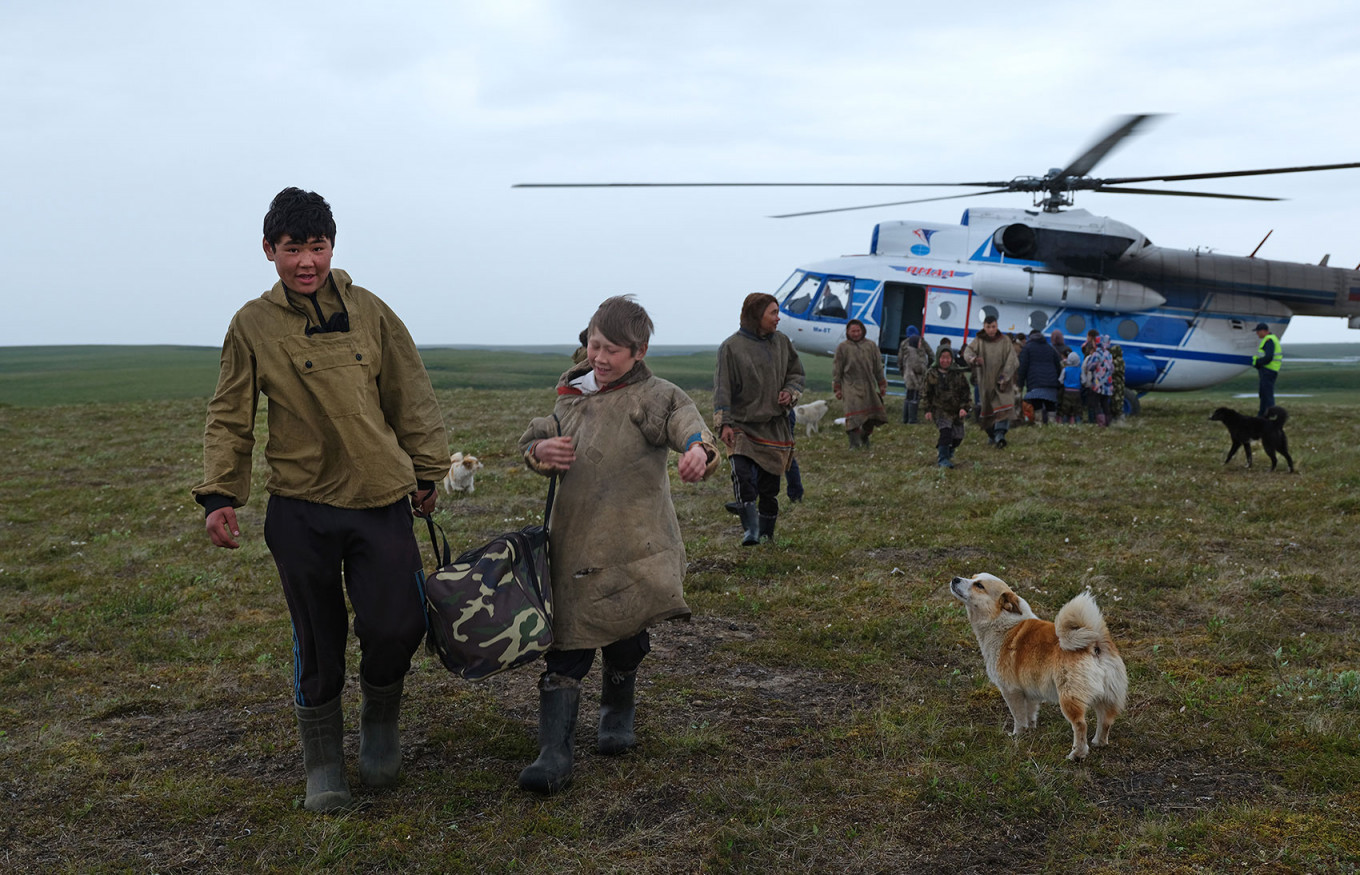
At the start of the summer, helicopters transport children from the village of Antipayuta, where they study at a boarding school, to their families for the summer holiday.
During the winter holidays, when the Taz Estuary freezes over, their parents bring them home on snowmobiles.
During the winter holidays, when the Taz Estuary freezes over, their parents bring them home on snowmobiles.
Alexander Romanov
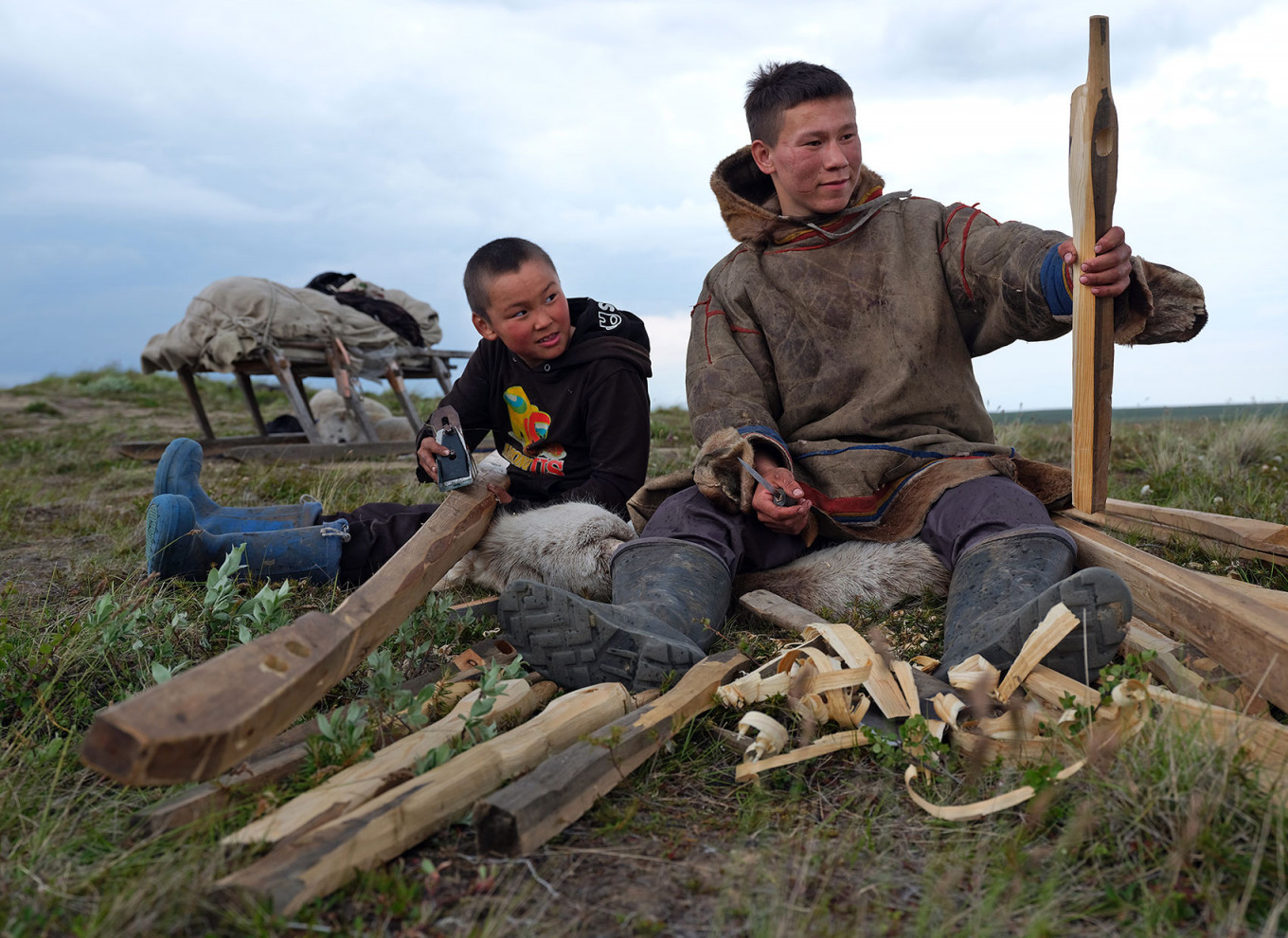
Five or six families live at the herders' camp on the Tazovsky Peninsula, located about 120 kilometers from the village of Yamburg. Each family has three to six children.
Alexander Romanov
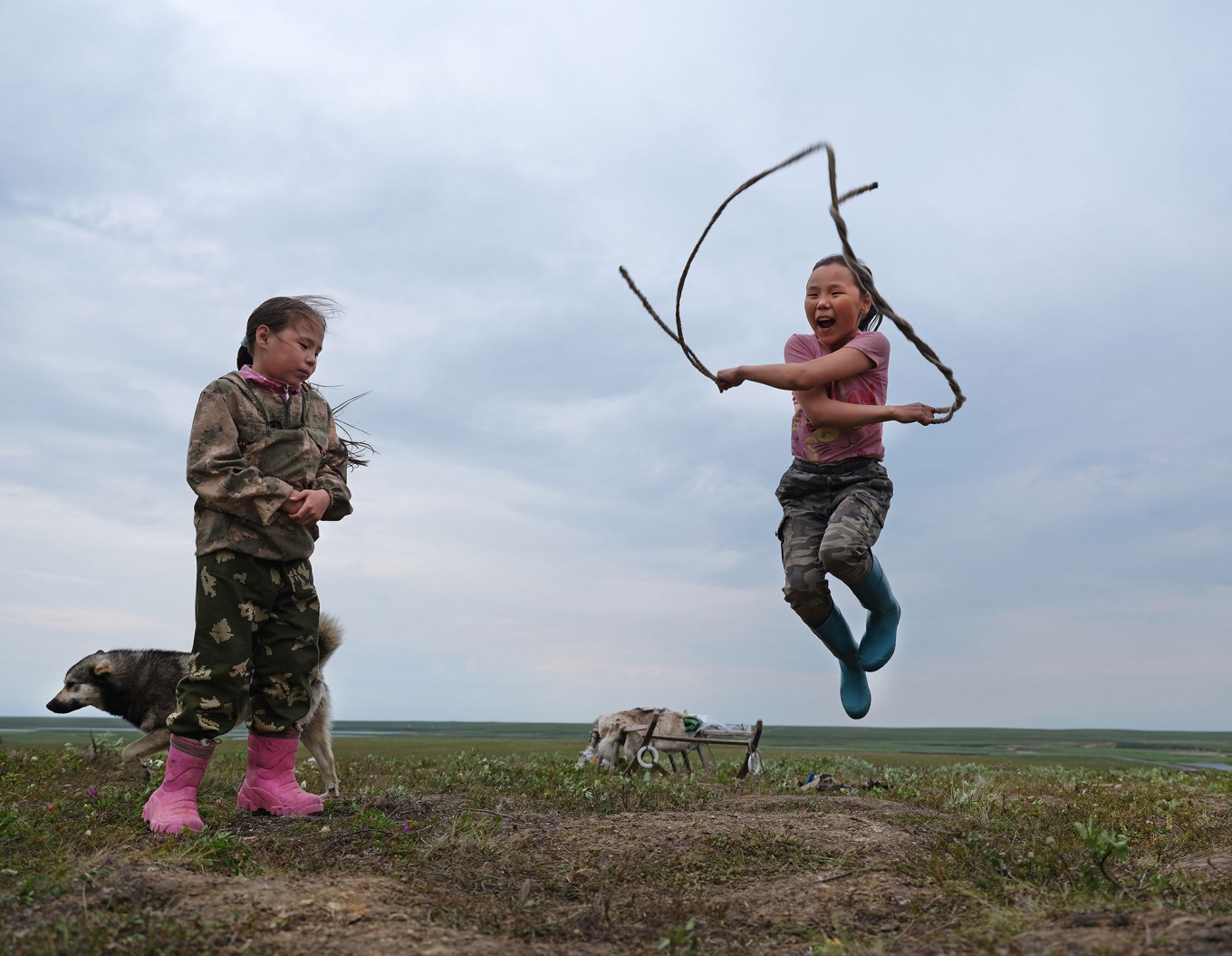
In the tundra, playing jump-rope is one way to pass the time...
Alexander Romanov
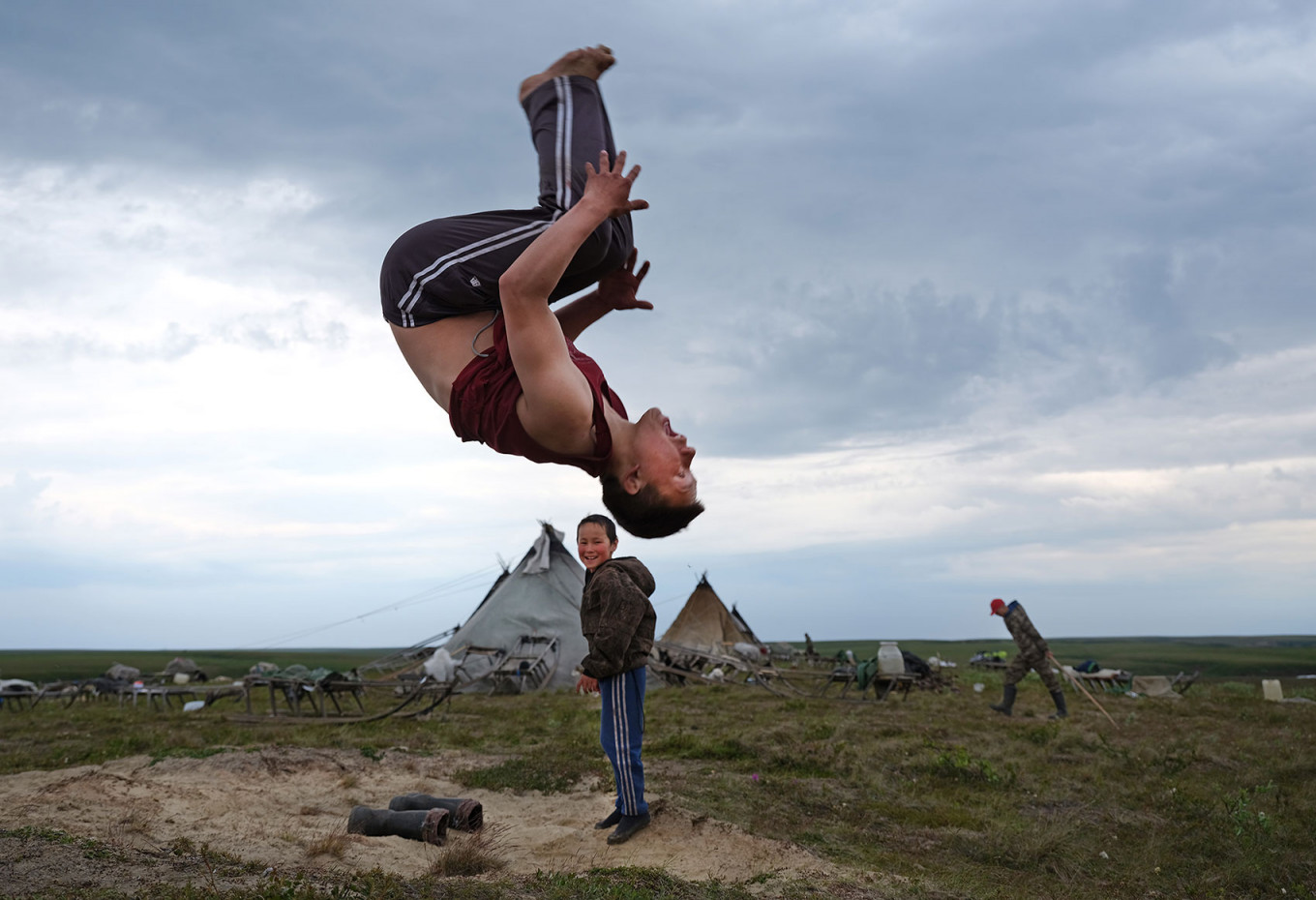
...pulling off other gravity-defying feats is another.
Alexander Romanov
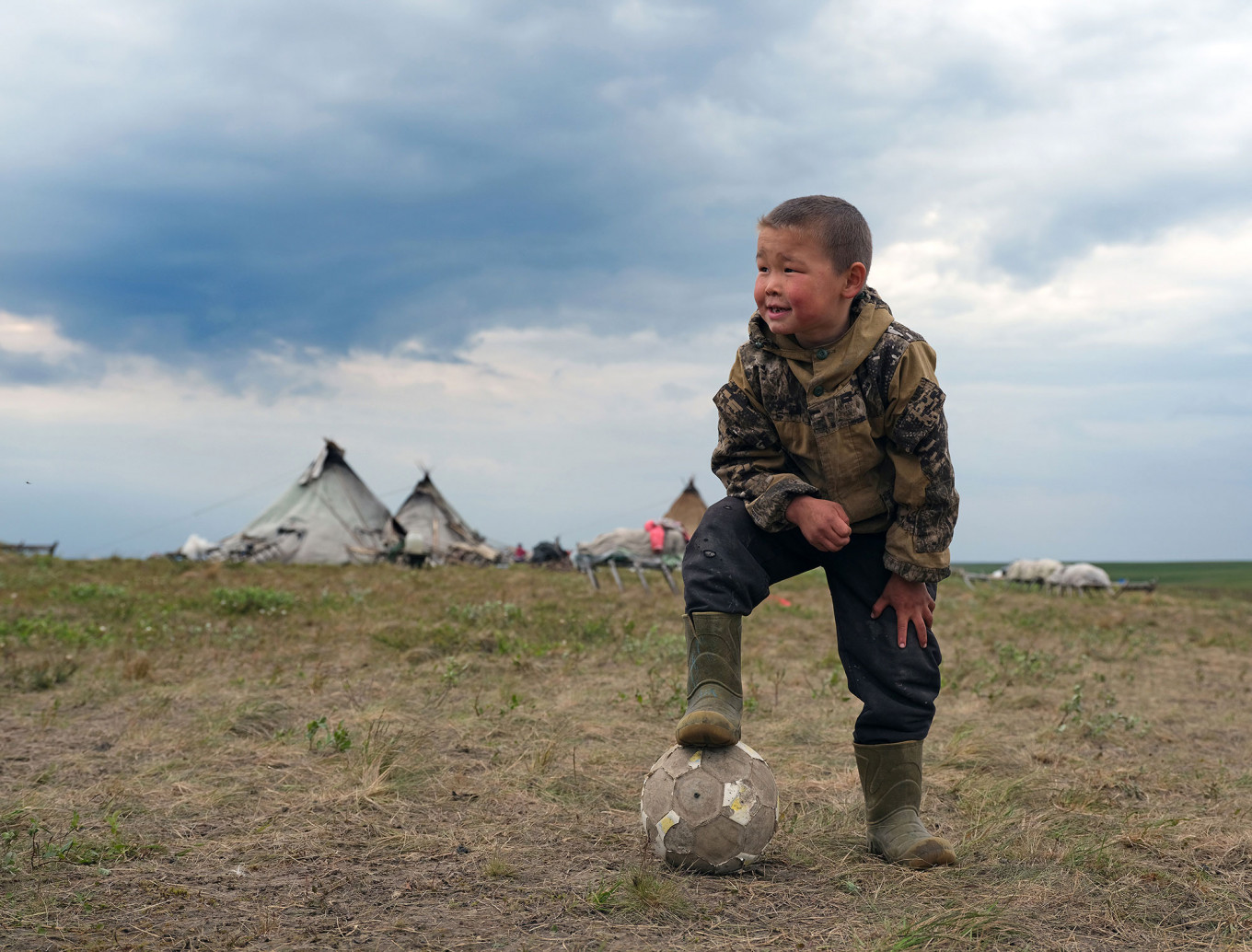
A boy takes a brief break from playing football, the traditional chum tents used by nomadic herders visible in the background.
Alexander Romanov
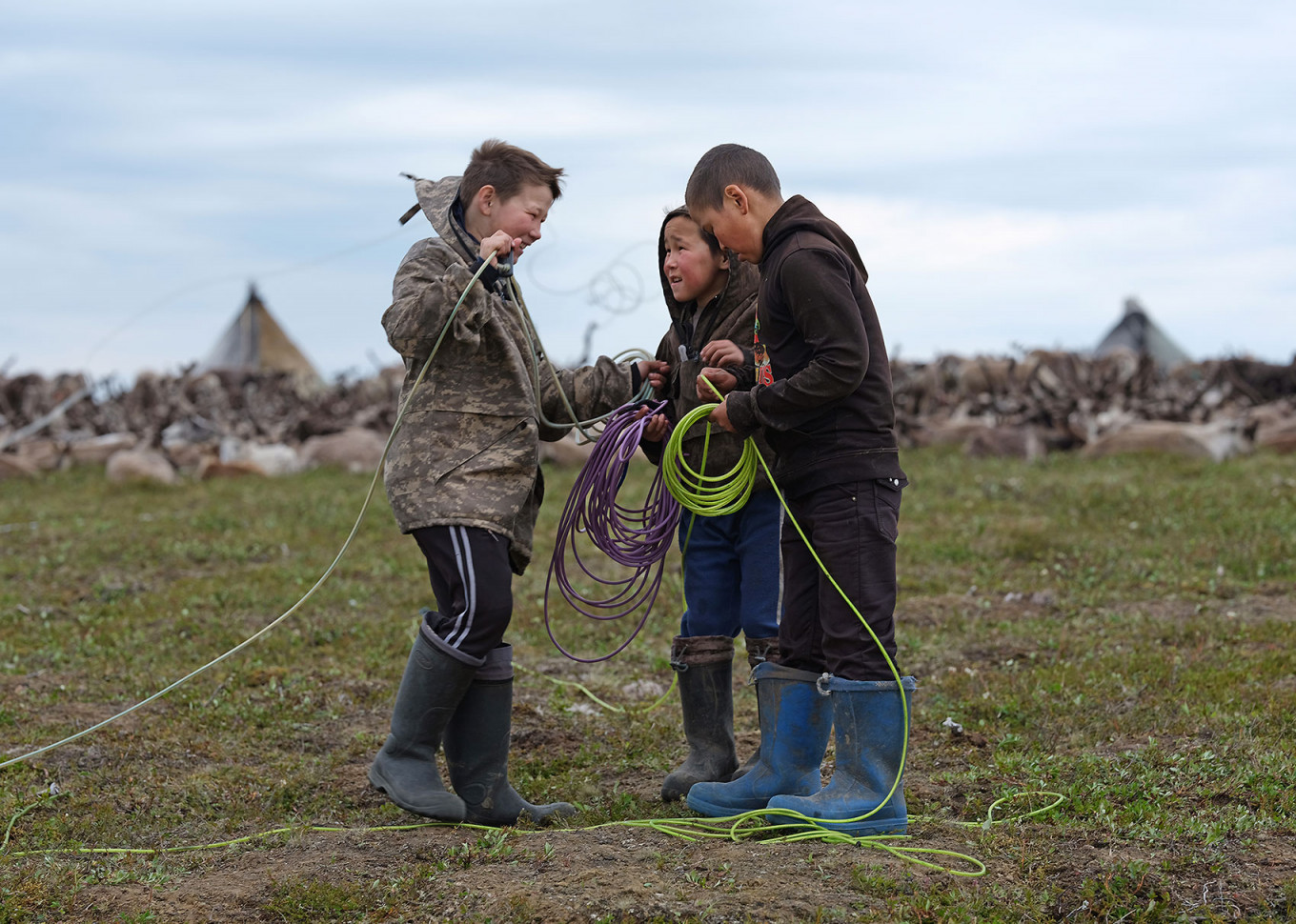
Boys typically start herding and catching reindeer at age seven.
Alexander Romanov
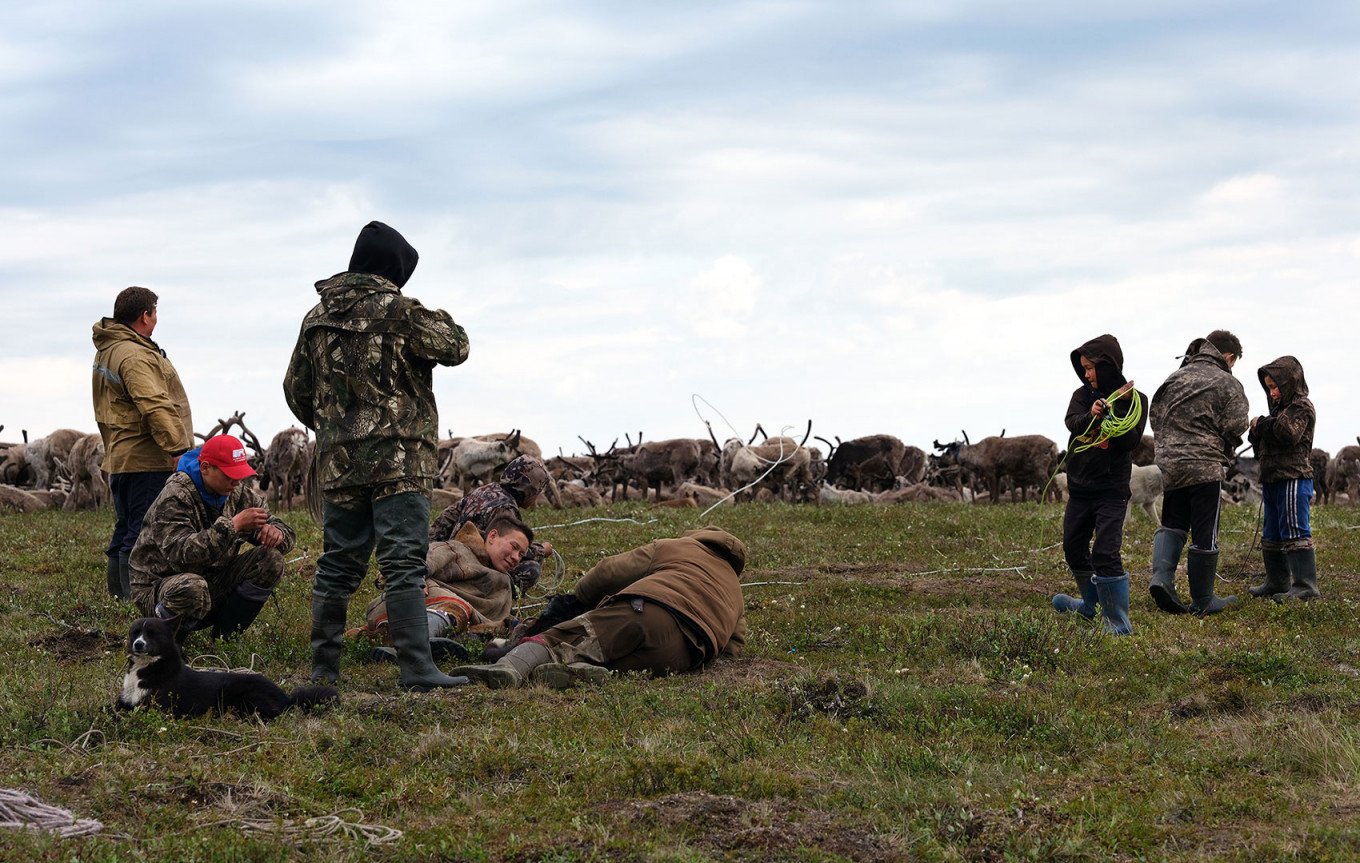
There are about 4,000 reindeer in this herd. Men and boys are responsible for herding and working with the reindeer, while women and girls are tasked with domestic work.
Alexander Romanov
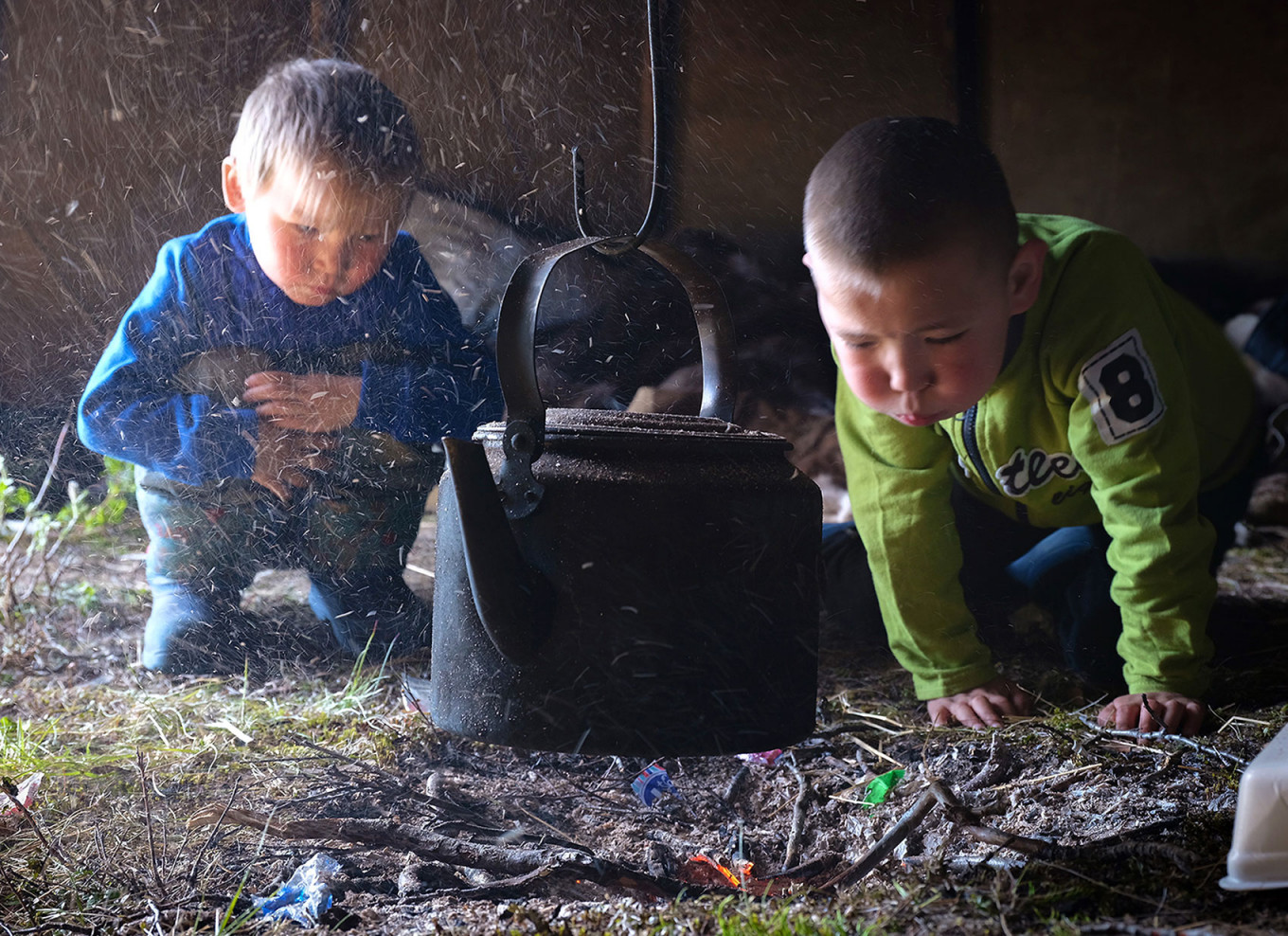
In these remote areas, starting a fire takes a bit more work than turning on a stovetop.
Alexander Romanov
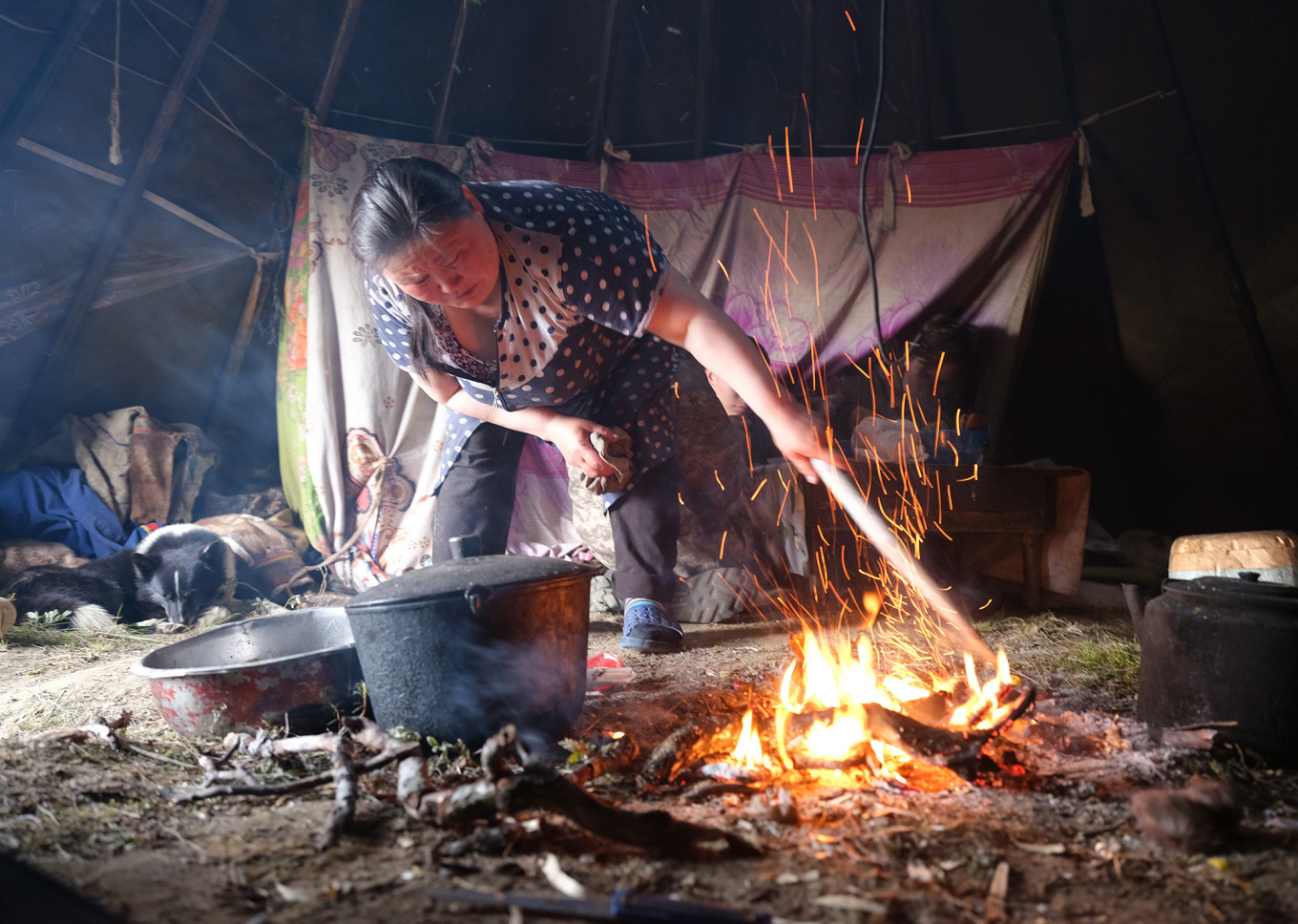
A woman tends the fire in her family's chum, a tent similar to a Native American tepee.
In addition to cooking food, women in the herders' camp are responsible for setting up the chum, chopping wood, sewing clothes and dressing reindeer hides.
In addition to cooking food, women in the herders' camp are responsible for setting up the chum, chopping wood, sewing clothes and dressing reindeer hides.
Alexander Romanov
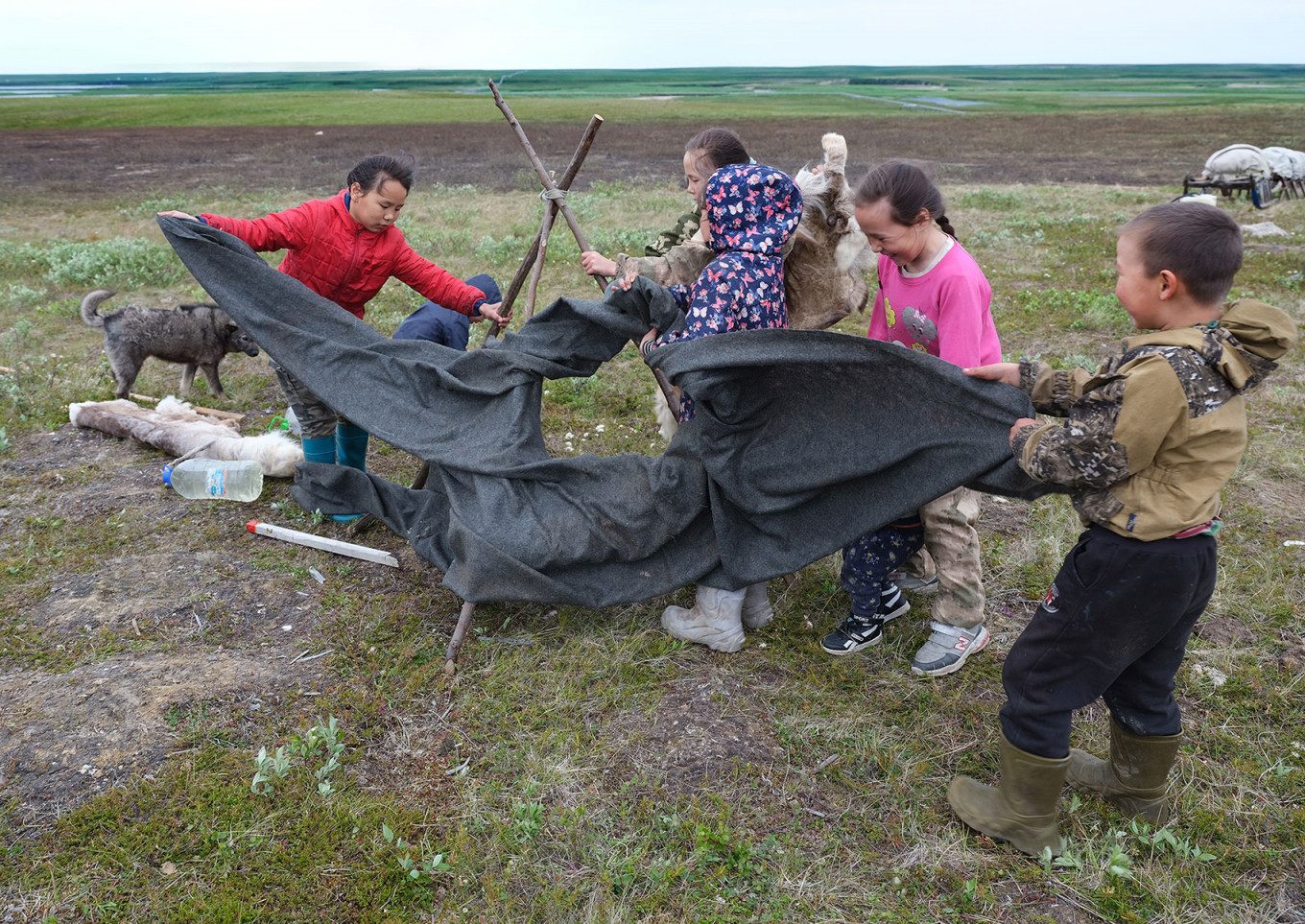
The traditional chum is made of reindeer hides sewn together and wrapped around wooden poles that are arranged in a circle...
Alexander Romanov
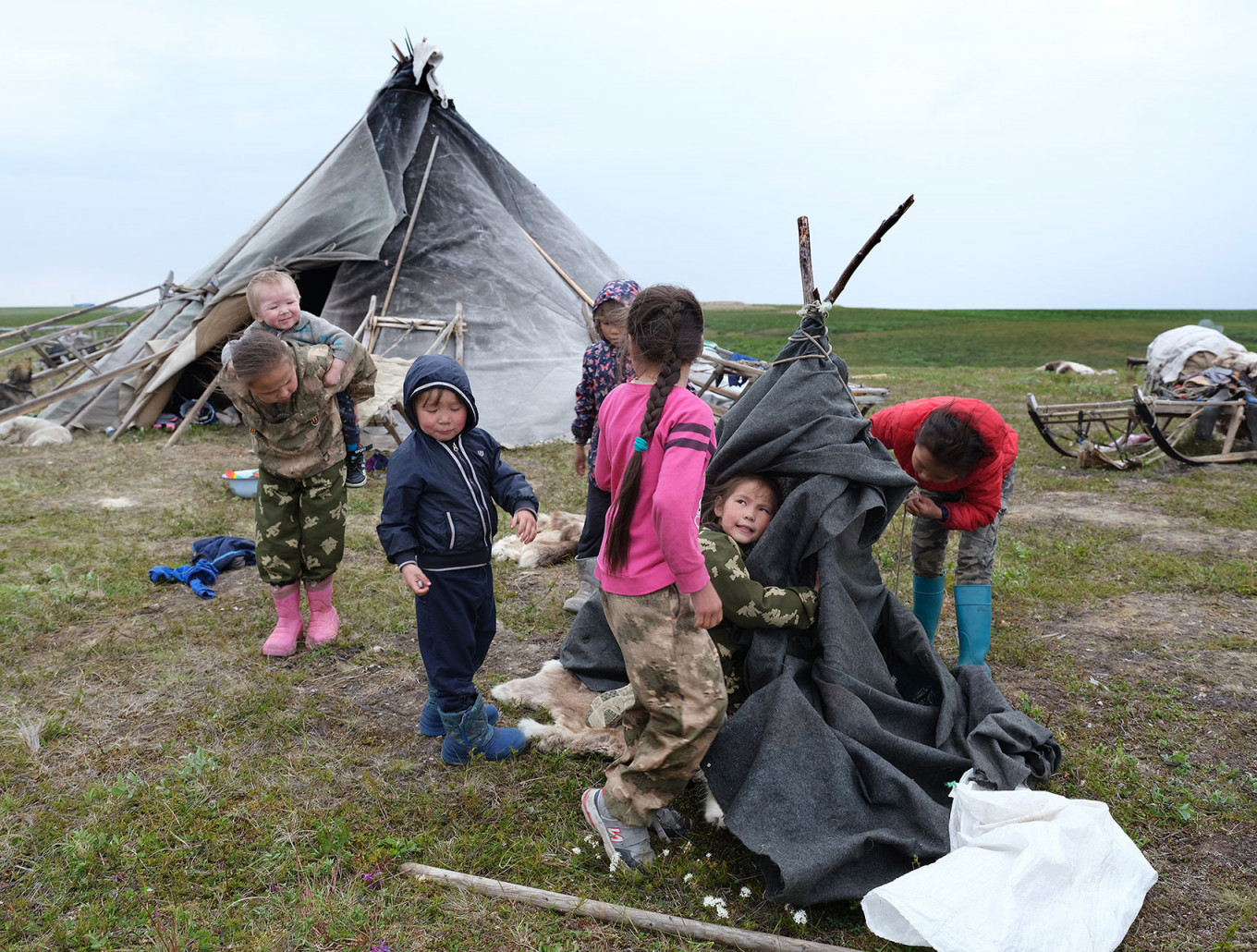
...And setting one up is often a group effort.
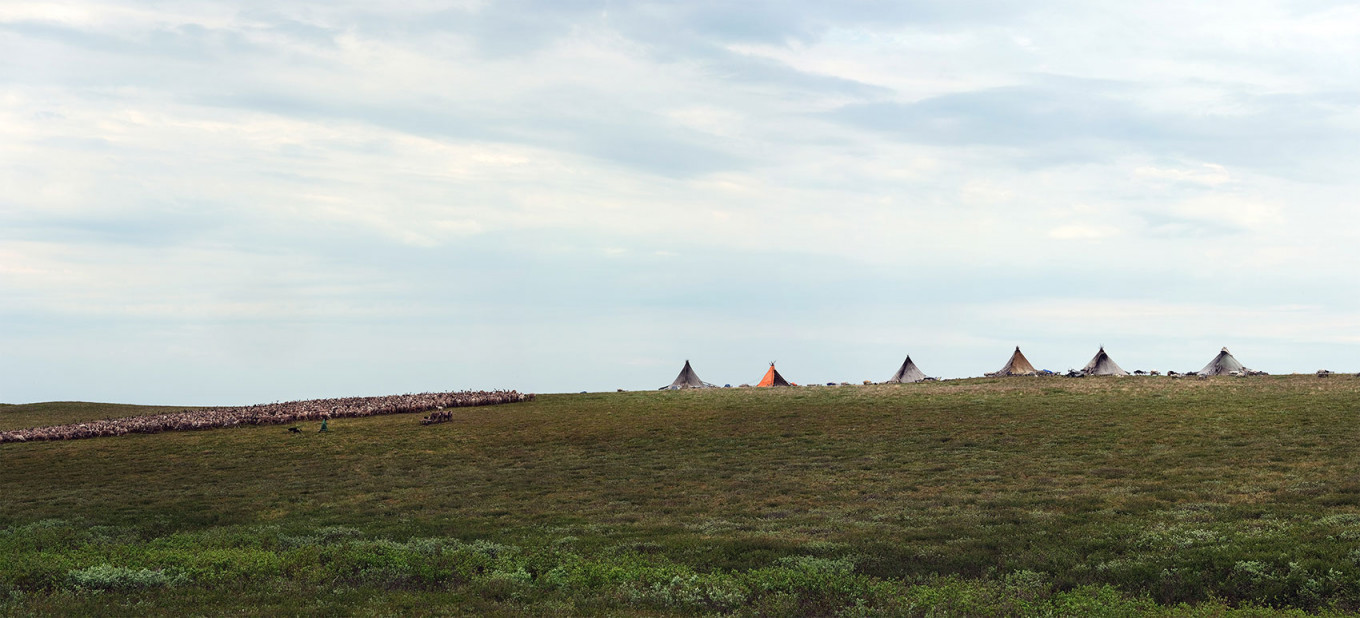
While the harsh winter has subsided, the tundra is still a challenging place to live in summer — but its indigenous populations continue to follow the traditional lifestyles of their ancestors.
Alexander Romanov




